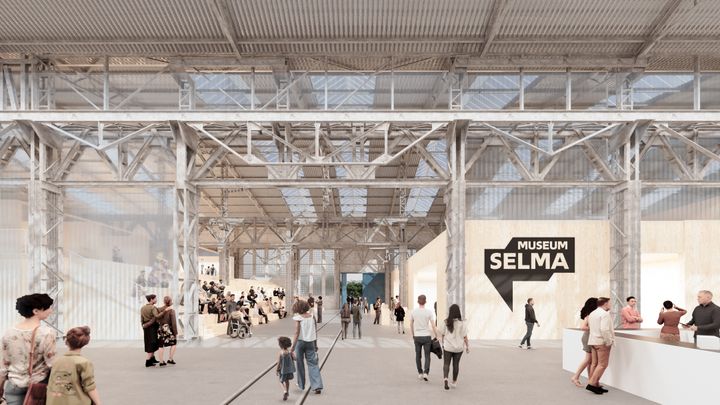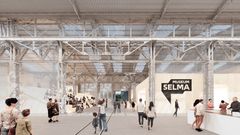Germany’s new Migration Museum: This is What it Will Look Like
Cologne, April 10, 2025 – Cologne is getting ready to welcome a new attraction in 2029: The Museum Selma will showcase Germany's past and present as a society shaped by immigration. The exhibition, based on 150,000 artifacts and testimonies witnessing to the history of migration in Germany, will have its home in a former industrial hall, promising visitors a unique free-flow experience. Behind this all is an organization started by migrants themselves. The museum is being developed with public funding of 44.26 million euro. ATELIER BRÜCKNER will take the lead on the project’s architectural and exhibition design, with a particular focus on sustainability.

The extent to which migration has shaped Germany since the Second World War will be showcased on a grand scale – with the opening of the Museum Selma, in Cologne, in the very heart of Europe. A former industrial hall will be remodeled for this purpose. Stuttgart-based ATELIER BRÜCKNER has been awarded the general planning contract. The architectural design for the Museum Selma preserves the support structure of the hall, which is over 100 years old, and supplements it with sustainable wooden fittings.
With a total area of around 10,000 square meters, this will be a modern museum designed structurally and conceptually to welcome and work with communities, urban society and marginalized groups. It will join exhibition space with multifunctional event areas, a movie theater, digital laboratory, kids’ space, storage rooms, and a library. The exhibition will showcase examples of the country's largest collection on the history of migration. The dress of a refugee from Togo, a food scale of an Italian labor migrant, the boxing gloves of an immigrant from Mostar. Most objects come from private donors, who all share one common belief: My history is German history.
"With the Museum Selma we are closing a gap in the landscape of German museums," says Dr. Robert Fuchs, director of DOMiD gGmbH, the museum’s non-profit parent organization. More than 21 million people in Germany have either immigrated themselves or come from families that did. Their perspectives are too often overlooked. Our museum will offer a place where democratic debate can flourish, prejudices can be dismantled, and we as a society can grow together."
Keywords
Contacts
Timo Glatz
DOMiD gGmbH – Documentation Center and Museum of Migration in Germany
Venloer Straße 419, 50825 Köln
presse@domid.org
+49 22129494484
https://www.museum-selma.de/en/press
Images


Links
Subscribe to releases from DOMiD - Dokumentationszentrum und Museum über die Migration in Deutschland e.V.
Subscribe to all the latest releases from DOMiD - Dokumentationszentrum und Museum über die Migration in Deutschland e.V. by registering your e-mail address below. You can unsubscribe at any time.